Goibniu: The Sword Smith Of Tuatha De Danann Who Forged Weapons For Battles In Celtic Mythology
A. Sutherland - AncientPages.com - Members of the tribe Tuatha De Danann included many prominent divine personalities such as Dagda, a chief god and his wife, Boann; Morrígan, a goddess of war and fate; Dian Cecht, a god of healing and medicine and his two children, Miach and Airmid; Manannán mac Lir, a god of the sea; Lugh, god of light, sun, and crafts, and his father, Cian.
 Photo by Sigo Paolini. source
Photo by Sigo Paolini. source
Other divinities included Brigid, a fiery goddess of poetry who protects storytellers and bards; Ogma, associated with eloquence and language; and many more magicians and artisans.
We must not forget about Goibniu, a god of metalsmithing, one of the three gods of the craft. He and Creidne, a god of metalworking, and Luchta, the carpenter, helped make magical weapons for the Tuatha De Danann.
Goibniu (his Welsh counterpart was Gofannon, and his Gaulish, Gobannos) is well-remembered from the Second Battle of Mag Tuired as a devoted and tireless armorer, providing Lugh (Lug Lámfhota) with the spear that penetrates Balor's eye.
Goibniu had extraordinary skills and delivered super-lethal weapons. He also made all the best weaponry for the warriors of the goddess Dana.
Goibniu worked with two other gods (perhaps his brothers), Luchta (Luchtain), the carpenter, and Creidne (Creidhnc), the bronze wright, and they were known as the Tri Dée Dána.
In Celtic Mythology: "A Concise Guide to the Gods, Sagas, and Beliefs", we read that "in the great battles between the Tuatha and the Fomorians, Creidne was constantly frustrated by the fact that they would kill the same soldiers, carrying brand new weapons, day after day. In frustration, they sent a spy to the Tuatha camp to discover the secret of this magic.
After coming back, the spy reported that he saw "how Goibniu forged lance heads with three blows of his hammer, while Luchta cut shafts for them with three blows of his ax, and Creidne fixed the two parts together ..."
Goibniu was a master; every weapon forged by him "always found its mark and never failed to kill," and the bodies of the dead and wounded warriors were all dipped in the magic Well of Health ("Tobar Slaine") and were thoroughly restored.
Cauldron Of Plenty, Magical Cow And Magical Drink
He is mentioned next to Dagda as one of the owners of the Cauldron of Plenty (a cauldron that is never dry. It was never empty of food and could also be used to restore life to fallen warriors.
The Gundestrup Cauldron is an impressive artifact associated with the Celtic culture. It is a magnificent vessel made from richly decorated plates of silver that were assembled into a single cauldron. It depicts warriors and other scenery and is dated to the 1st or 2nd century BC. Read more
According to some tales, the magical cow known as Glas Ghoibhneann ("the grey of Goibniu") was supposed to belong to him, and the animal gave an unlimited amount of milk. She would fill any vessel placed under her.
In one myth, Goibniu was also the host of other-worldly feasts, the so-called 'Fled Goibnenn', which took place in the afterlife. The guests consumed vast quantities of an intoxicating drink (now identified as ale). Instead of getting drunk, they were protected from old age and decay.
Goibniu personally served the divine drink to his guests. This potion was widely distributed before significant battles.
Drinks that give supernatural powers are mentioned in many myths and legends. For example, the Amrita granted immortality and strength; it could ensure victory in the fight against demons, with which the gods had to fight to protect the divine drink. References to this miraculous nectar can be found not only in the Rig Veda, the oldest of the sacred books of Hinduism, and in Buddhist or Sikh literature.
Archaeologists and historians have also wondered whether the mead consumed by Norse gods and later Vikings had the healing properties of honey.
Mysterious Lineage Of Goibniu
Goibniu's name derives from the word 'smith' (in Old Irish' gobha' and modern Irish 'gabha'), but not much is known about the crafting god of Tuatha. There is much disagreement regarding his parents and his other relatives.
On the one hand, if we consider his Welsh counterpart, Gofannon, it could theoretically mean that Goibniu was the son of Danu, or even a brother of the chief god, Dagda and Dian Cecht. On the other hand, he could have been a grandson of the war-god Néit, as is Balor, and one of the four sons of Esarg, along with Creidne, Luchta, and Dian Cécht, the healing god.
In an alternate text, he is the brother of the Dagda, Nuadu, Creidne, and Luchta, with whom he helps to conquer Ireland for the Tuatha Dé Danann. In other sources, he was related to Gobán Saor (Gobbán Saor), a highly-skilled smith or architect in Irish history and legend. Or was he perhaps a foster father of Lugh (Lug Lámfhota), a god of the sun or light?
Written by – A. Sutherland - AncientPages.com Senior Staff Writer
Updated on March 24, 2024
Copyright © AncientPages.com All rights reserved. This material may not be published, broadcast, rewritten or redistributed in whole or part without the express written permission of AncientPages.com
Expand for referencesReferences:
MacCulloch, J.A. Religion of the Ancient Celts.
Anne E. Duggan, Donald Haase, Helen J. Callow, Folktales and Fairy Tales
More From Ancient Pages
-
 Cooking, Roasting And Eating Of Root Plants Is 120,000-Year-Old Habit
Archaeology | Jun 7, 2019
Cooking, Roasting And Eating Of Root Plants Is 120,000-Year-Old Habit
Archaeology | Jun 7, 2019 -
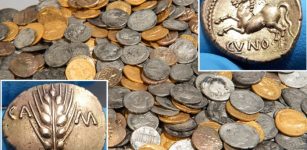 Unique Hoard Of Roman-British Coins Found Near Utrecht, The Netherlands
Archaeology | Jan 27, 2025
Unique Hoard Of Roman-British Coins Found Near Utrecht, The Netherlands
Archaeology | Jan 27, 2025 -
 The Mystery Of Ancient Ever-Burning Lamps
Ancient Technology | Sep 10, 2024
The Mystery Of Ancient Ever-Burning Lamps
Ancient Technology | Sep 10, 2024 -
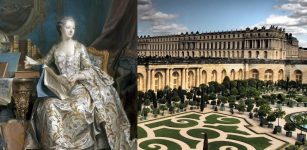 Madame de Pompadour – Powerful And Hated Mistress – Sex, Manipulation And Intrigue In Versailles
Featured Stories | Jul 12, 2018
Madame de Pompadour – Powerful And Hated Mistress – Sex, Manipulation And Intrigue In Versailles
Featured Stories | Jul 12, 2018 -
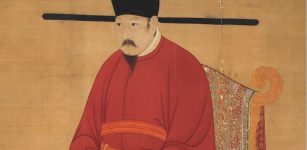 On This Day In History: Most Unusual Emperor Renzong Of Song Dynasty Was Born – On May 30, 1010
News | May 30, 2016
On This Day In History: Most Unusual Emperor Renzong Of Song Dynasty Was Born – On May 30, 1010
News | May 30, 2016 -
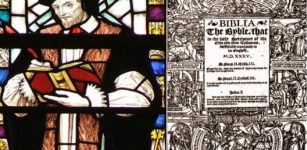 On This Day In History: Myles Coverdale Who Printed First English Bible Died – On Jan 20, 1569
News | Jan 20, 2017
On This Day In History: Myles Coverdale Who Printed First English Bible Died – On Jan 20, 1569
News | Jan 20, 2017 -
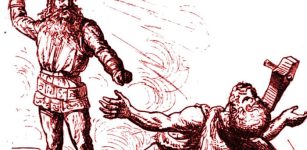 Giant Hrungnir Who Lost The Race And Engaged In A Deadly Duel With Mighty Thor In Norse Mythology
Featured Stories | Sep 19, 2018
Giant Hrungnir Who Lost The Race And Engaged In A Deadly Duel With Mighty Thor In Norse Mythology
Featured Stories | Sep 19, 2018 -
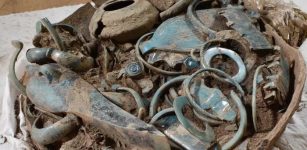 Hundreds Of Exceptional Bronze Age Artifacts Discovered In France Were Probably Offerings
Archaeology | Aug 28, 2021
Hundreds Of Exceptional Bronze Age Artifacts Discovered In France Were Probably Offerings
Archaeology | Aug 28, 2021 -
 Oldest Writing System Among Slavs To Be Germanic Runes – New Study
News | Feb 15, 2021
Oldest Writing System Among Slavs To Be Germanic Runes – New Study
News | Feb 15, 2021 -
 Large, High-Elevation Cities Along Asia’s Silk Roads Exposed By High-Res Lidar
Archaeology | Oct 23, 2024
Large, High-Elevation Cities Along Asia’s Silk Roads Exposed By High-Res Lidar
Archaeology | Oct 23, 2024 -
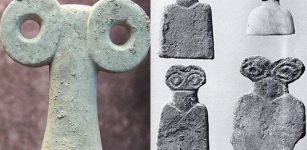 Remarkable Ancient Statues From The Eye Temple – Unique Legacy From Tell Brak, Syria
Artifacts | Jul 20, 2018
Remarkable Ancient Statues From The Eye Temple – Unique Legacy From Tell Brak, Syria
Artifacts | Jul 20, 2018 -
 Mysterious Visitors From Other Realms And Enigma Of Atmospheric Phenomena
Featured Stories | Jul 19, 2018
Mysterious Visitors From Other Realms And Enigma Of Atmospheric Phenomena
Featured Stories | Jul 19, 2018 -
 Sacred Artifact With Mystical Powers – The Legend – Part 1
Ancient Mysteries | Apr 24, 2019
Sacred Artifact With Mystical Powers – The Legend – Part 1
Ancient Mysteries | Apr 24, 2019 -
 Satellite Images Reveal Huge 4000-Year-Old Military Network In Syria
Archaeology | Dec 23, 2017
Satellite Images Reveal Huge 4000-Year-Old Military Network In Syria
Archaeology | Dec 23, 2017 -
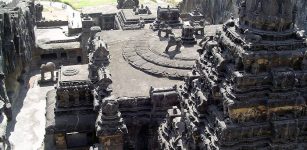 Cannabis Protected India’s Famous Ellora Caves From Decay For 1,500 Years
Archaeology | Mar 12, 2016
Cannabis Protected India’s Famous Ellora Caves From Decay For 1,500 Years
Archaeology | Mar 12, 2016 -
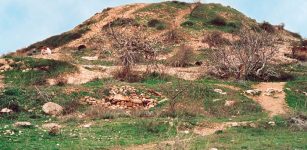 Ancient Mystery Of Giant Mounds Of Jerusalem Built For Unknown Reasons – Archaeologists Are Still Baffled
Archaeoastronomy | Aug 24, 2020
Ancient Mystery Of Giant Mounds Of Jerusalem Built For Unknown Reasons – Archaeologists Are Still Baffled
Archaeoastronomy | Aug 24, 2020 -
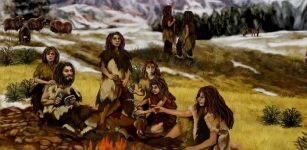 Can Diseases Explain Why Neanderthals Suddenly Disappeared About 40,000 Years Ago?
Archaeology | Nov 9, 2019
Can Diseases Explain Why Neanderthals Suddenly Disappeared About 40,000 Years Ago?
Archaeology | Nov 9, 2019 -
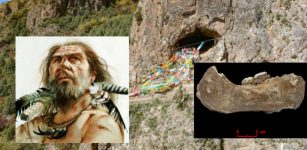 Denisovans Were First To Adapt To High Altitude And Harsh Conditions Of Tibetan Plateau
Archaeology | May 2, 2019
Denisovans Were First To Adapt To High Altitude And Harsh Conditions Of Tibetan Plateau
Archaeology | May 2, 2019 -
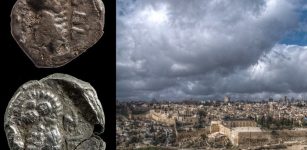 Extremely Rare And Tiny Biblical Coins Discovered Near The Temple Mount
Archaeology | May 30, 2018
Extremely Rare And Tiny Biblical Coins Discovered Near The Temple Mount
Archaeology | May 30, 2018 -
 Humans Were Living Around Fort McMurray, Alberta 13,000 Years Ago – Scientists Reveal
Archaeology | Aug 3, 2022
Humans Were Living Around Fort McMurray, Alberta 13,000 Years Ago – Scientists Reveal
Archaeology | Aug 3, 2022


